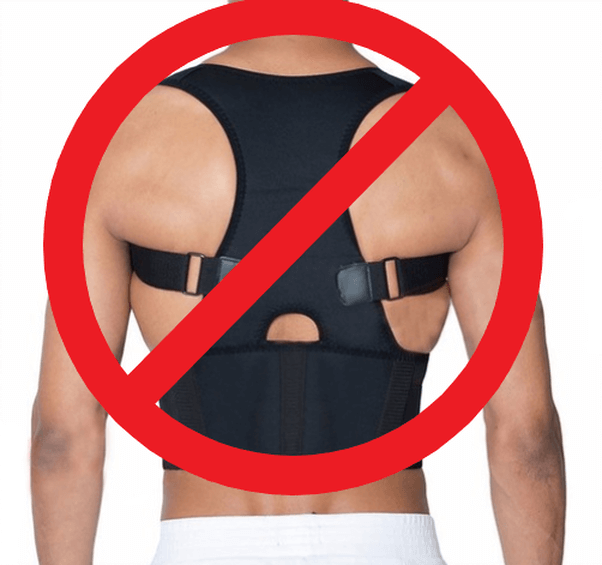Why would we want to wear a back/shoulder brace in dentistry anyway? The answer there is obvious – we are in pain! Our backs, shoulders, necks, hips and body overall hurt! We spend hours, days, years and decades hunched over people trying to see into a 3″ hole, while trying to isolate a single tooth in that hole and restore or clean it to perfection. This job is physically demanding at best. So what’s wrong with a little support from a brace? I’ll tell you what, it’s called atrophy.
The term “if you don’t use it, you lose it” couldn’t be more true when it comes to the body’s musculoskeletal system. When muscles aren’t engaged they break down and become smaller in size. Furthermore, chronic disease or injury (including cumulative microtrauma) can damage or cease innervation processes that give muscles the signal to contract/relax. A lack of protein uptake leaves muscles starved while increased enzymes that break down proteins shrink muscle fiber size and ability to contract for a longer period of time. Without adequate size and sufficient contraction, the muscle becomes weak. The weaker they are, the less capable they are of providing strength to the bones they support.
Still not sure how this applies to a back brace? If we introduce external support for the bones to put us in a neutral position and the muscles atrophy, when we remove that support the underlying posture muscles are rendered even less capable of doing their job than they were to begin with. The result is even poorer posture, which results in further injury, skeletal changes, functional deficiencies and by default more pain.
If you want to achieve better posture – even if you could care less about posture but just want to reduce your pain, strengthen your posture muscles, don’t shrink them. Engagement of the core, like holding yourself in correct neutral posture, helps prevent atrophy – that’s how saddle stools are helpful to maintaining posture. That’s why core exercises like planks help with posture. It’s learned and practiced over and over. Remember, what we use is we maintain.
All of that said, there is a circumstance that a back/shoulder braces can be helpful. When there is a complete lack of mind-muscle connection and the person can no longer recognize what proper posture feels like, a brace can be worn for a VERY brief period of time each day (30-60 min) to re-establish the neuromuscular pathways necessary for learned function and positioning. The way to learn something is to do it right? So wear the brace for an hour, focus on committing to memory what the body feels like in that position (not just enjoying the effects of it) and take the training wheels off. Then practice that same good posture.
Practice, practice and practice some more. At first, it is hard. Maintaining neutral positioning may only happen for seconds at a time. It can be tiring like any other exercise but also like any other exercise, it is worth it. If we take the time to practice posture AND build the posture muscles it comes faster. The stronger the support system, the better the support.
As always, ergonomics and fitness for health, it’s a lifestyle.

